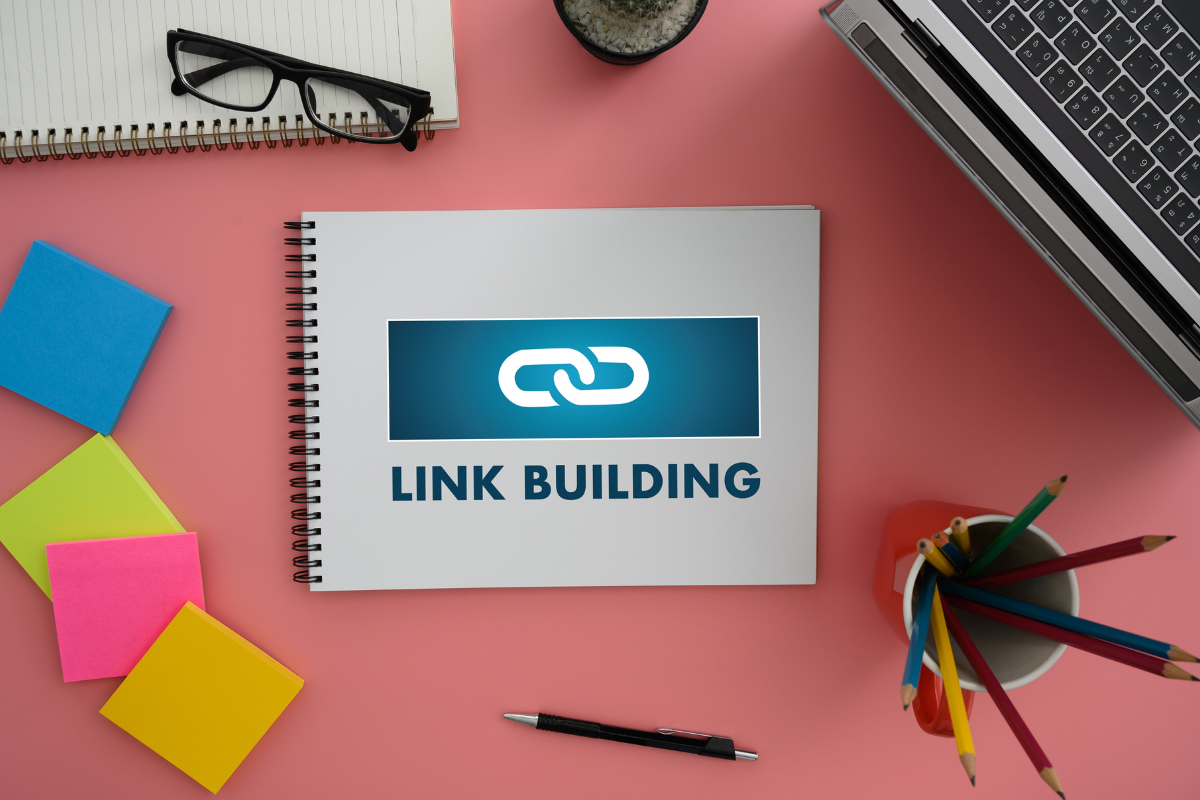Post Title
How to Create Location-Based Content for Real Estate Websites
May 11, 2025
Creating location-based content for real estate websites isn’t just a passing trend—it’s an essential strategy for staying visible and relevant in a competitive market. Today’s buyers and renters rely on hyperlocal information, from neighborhood insights to school districts and nearby amenities, when making housing decisions.
Whether you’re promoting upscale condos in city centers or family-friendly homes in quiet suburbs, tailoring your content to specific geographic areas helps improve your search rankings, attract qualified leads, and build trust with your audience through your website.
Here, we’ll walk you through proven tactics for creating compelling, localized content that not only drives traffic but also boosts conversions.
Let’s get started!
Why Location-Based Content Matters in Real Estate Marketing
When people start looking for a home, they don’t just search for broad terms like “homes for sale.” Instead, they use specific, location-driven queries like “2-bedroom condo in Austin” or “homes near Central Park.” That’s exactly where location-based content comes in—and why it’s essential for real estate websites.
By creating content tailored to cities, neighborhoods, or even zip codes, your website becomes more visible to search engines and more useful to potential buyers or renters. It’s not just about ranking higher—it’s about offering content that meets people where they are in their home search journey.
Key Reasons to Go Local:
- Boosts SEO: Google favors locally relevant content, helping your site appear in geo-targeted searches.
- Attracts Qualified Traffic: Users searching for “homes in Portland” are usually serious about buying or renting in that specific area.
- Builds Authority: Creating content about local market trends, neighborhoods, and amenities shows you know the area well.
- Improves User Experience: Buyers want more than listings—they want context about schools, restaurants, transportation, and more.
Real estate websites that prioritize location-based content don’t just perform better in search—they also deliver the local insights today’s buyers and renters crave.
Understanding Local Buyer and Renter Intent
To create content that truly connects, real estate websites need to dig into what local buyers and renters are actually looking for. It’s not enough to simply showcase listings—they want to know what life is like in a specific area. What makes one neighborhood more desirable than another? Why should they choose this part of town over another?
By answering these questions, you position your site as a trusted local guide—not just a listing directory.
Things Buyers/Renters Typically Look For:
- Commute Times to Downtown or Employment Hubs: Proximity to work is a major deciding factor, especially in metro areas.
- School District Ratings and Options: Families prioritize education and want insight into nearby public and private schools.
- Crime Rates and Safety Statistics: Safety is a top concern for everyone, and having this data adds value.
- Walkability, Transit, and Bike-Friendliness: Urban buyers often look for accessible, car-free lifestyles.
- Access to Shops, Restaurants, and Parks: Local amenities make a neighborhood feel like home.
- Vibe and Culture of the Neighborhood: Every area has its own feel—some are vibrant and trendy, others quiet and suburban.
When real estate websites address these local priorities, they create content that resonates. It’s about showing you understand your audience’s needs—and offering insights that help them make informed decisions.
How to Research High-Value Geographic Keywords

If you want your real estate website to show up in the right searches, keyword research is where it starts—especially for location-based content. The goal is to target terms people are actually typing when they’re ready to buy, rent, or explore a neighborhood. You’re not just optimizing for traffic; you’re optimizing for intent.
To get it right, focus on keywords that blend property types with locations, and always consider what your audience is trying to accomplish when they search.
Tools to Use:
- Google Keyword Planner: A free tool that gives basic volume and competition data.
- Ahrefs: Great for finding keyword difficulty, search trends, and competitor insights.
- SEMrush: Offers local keyword suggestions and domain-specific performance.
- Ubersuggest: Budget-friendly and user-friendly for long-tail keywords.
- Google Trends: Tracks location-specific search behavior over time.
What to Look For:
- “[City] Homes for Sale”
- “[Neighborhood] Real Estate”
- “Apartments in [Zip Code]”
- “[Suburb] Best Schools”
And don’t forget to target long-tail phrases like “pet-friendly apartments in Dallas Uptown” or “condos with rooftop pool in Miami Beach.” These searches may have lower volume but usually signal high intent.
Pro Tip: Use Google’s “People also ask” and “Related searches” to find hidden opportunities and fill content gaps your competitors might be missing.
Crafting Hyperlocal Area Guides That Engage Visitors
If you want visitors to spend more time on your site and trust your expertise, hyperlocal area guides are a must. These guides do more than just boost your SEO—they show you truly know the neighborhoods you’re featuring. Whether someone’s moving across town or relocating from another state, they’re looking for insights beyond the listings.
Great area guides help the best real estate websites rank for specific location-based keywords while giving buyers and renters the local context they crave.
A Good Area Guide Should Include:
- An Overview of the Location: Set the scene—describe the general vibe and geography.
- Highlights of Local Attractions, Businesses, and Amenities: Mention restaurants, parks, shops, and landmarks.
- Market Trends and Average Home Prices: Give current data to help users understand affordability.
- Neighborhood Pros and Cons: Be honest and balanced—it builds trust.
- Lifestyle Info: Whether it’s perfect for young professionals or growing families, make it clear.
Tips:
- Add Original Photos or Videos: Make your guides visually appealing and authentic.
- Include Maps and Directions: Help users get a sense of place.
- Interview Locals for Quotes: Personal insights make the content more relatable.
- Embed Listings from the Area: Make it easy for users to take the next step.
Well-crafted guides keep visitors engaged and position top ranked real estate websites as a trusted local resource.
Using Neighborhood Data to Inform Your Content Strategy

If you want your content to stand out and be taken seriously, backing it up with real data is essential. Buyers and renters today are savvy—they want more than nice photos and listing descriptions. They want hard facts that help them make confident decisions. That’s where data comes in.
Real estate websites that incorporate up-to-date neighborhood statistics not only earn more trust but also rank better in search engines. It shows you’re not just selling homes—you’re providing valuable local insight.
Key Data Points to Consider:
- Median Home Values and Trends: Show how the market is performing in a specific area.
- Rental Rates Over Time: Useful for investors and renters alike.
- Crime Rates: Safety is a top priority for most buyers.
- School Rankings: Families often base their home choices on school quality.
- Demographic Data (age, income, etc.): Helps paint a full picture of who lives in the area.
Sources of Data:
- Census Bureau
- Local Police Department Websites
- School District Portals
- Zillow, Redfin, or Realtor.com Market Insights
To make the numbers easier to understand, consider adding infographics or charts. A simple visual can convey complex data more effectively than text alone.
When you combine clear statistics with well-written local content, your real estate website becomes both informative and engaging—hitting the SEO and user experience sweet spot.
Incorporating Local Events and News into Blog Posts
Your blog doesn’t have to focus solely on listings—real estate websites have a great opportunity to become go-to community resources. By covering local events and neighborhood news, you keep your content fresh, relevant, and engaging for both search engines and site visitors.
People searching for homes often want to know more than property specs—they want to get a feel for the lifestyle. Highlighting local happenings gives your audience a better sense of what it's like to live in the area while naturally incorporating location-based keywords.
Ideas for Local Blog Posts:
- "Top 5 Farmers Markets in [City]": Great for showing off the area’s community vibe and local flavor.
- "Annual [City] Parade: What You Need to Know": Seasonal events are perfect for timely content that draws in repeat visitors.
- "New Developments Coming to [Neighborhood]": Keep buyers updated on growth, infrastructure, or new housing options.
- "Best Summer Camps in [Suburb]": Appeals to families looking for neighborhood-friendly amenities.
Writing about these topics doesn’t just improve your SEO—it also builds trust by showing you're in tune with the community.
Plus, local blog posts help capture seasonal traffic, making your real estate website more dynamic and more useful all year round.
Optimizing Real Estate Websites for Geo-Specific Searches

Creating great content is essential, but if your real estate website isn’t optimized for geo-specific searches, you’re missing out on valuable local traffic. Buyers and renters are searching with location in mind—so your site needs to be structured in a way that helps search engines understand your geographic focus.
That’s where on-page SEO comes in. By fine-tuning the technical elements of your site to align with local search intent, you increase the chances of showing up in the right results at the right time.
Optimization Tips:
- Add City/Region Names to Title Tags and Meta Descriptions: Make it clear where your services are focused.
- Use Schema Markup for Local Business: Help search engines read your location info more accurately.
- Geo-Tag Images When Possible: Especially for photos of listings, landmarks, or neighborhoods.
- Create Internal Links Between Location-Based Pages: This improves crawlability and connects related local content.
- Make Sure Your Sitemap is Updated and Includes All Local Landing Pages: A clean, complete sitemap ensures every page gets indexed.
These small adjustments help your site rank better in local searches and give users a more seamless experience. Geo-optimization isn’t just a technical checklist—it’s a smart way to make sure your real estate website shows up exactly where and when it matters most.
Creating City, Suburb, and Zip Code Landing Pages
If you want to capture high-intent local traffic, city, suburb, and zip code landing pages are essential. These pages give real estate websites the opportunity to rank for hyper-specific searches like “homes for sale in 90210” or “townhouses in Naperville.” The more granular your targeting, the more likely you are to connect with serious buyers or renters looking in that exact area.
But it’s not just about building a bunch of pages—it’s about making each one meaningful and relevant to its audience.
What to Include on Each Page:
- Summary of the Area: Give a quick, engaging overview that highlights the neighborhood’s character and appeal.
- Featured Listings: Show active properties with up-to-date details.
- Local Market Stats: Share pricing trends, inventory levels, and other key data.
- Testimonials or Case Studies: Add real voices or success stories to build trust.
- CTA (contact form, phone number): Make it easy for visitors to take action.
The key is originality. Avoid duplicating content across pages. Instead, tailor each one to reflect what makes that location distinct—whether it's school quality, walkability, or cultural landmarks.
When done right, these pages help real estate websites rank for geo-targeted keywords while delivering the local insight that converts visitors into leads.
Leveraging Google Business Profile for Local Content Signals

If you're serious about ranking in local search results, your real estate website needs a well-optimized Google Business Profile. It’s one of the most powerful tools for boosting visibility in Google Maps and the Local Pack—those prime spots where motivated buyers and renters are looking.
Your profile isn’t just a directory listing—it’s a local content signal that tells Google, “We’re active, trustworthy, and based right here.”
Best Practices:
- Fill Out Every Field with Up-to-Date Info: Include your business name, address, phone number, website, hours, and real estate categories.
- Add Location-Based Services: Mention specific neighborhoods or areas you serve to help show up for geo-specific searches.
- Upload Local Images: Showcase your listings, office, and the neighborhoods you work in to build credibility and engagement.
- Post Updates About Open Houses or Market Stats: Use the “Posts” feature to share timely, location-relevant content.
- Encourage and Respond to Reviews: Positive reviews build trust and improve your local ranking—always reply to show you're engaged.
Keeping your Google Business Profile active and detailed sends strong local signals to Google, helping your real estate website appear more often in searches from people nearby. It’s simple, free, and highly effective for driving traffic and leads in your service areas.
Tips for Updating Location-Based Content Regularly
Keeping your content fresh isn’t just a nice-to-have—it’s essential for staying competitive in search results. Google rewards websites that consistently update their pages, and stale or outdated content can lead to drops in rankings. For real estate websites, this means regularly revisiting your city, suburb, and zip code pages to keep them current and relevant.
You don’t have to start from scratch every time—just make sure your updates reflect what’s happening now in the area.
How to Keep Content Fresh:
- Schedule Quarterly Updates to All Major Landing Pages: Set reminders to check and revise content every few months.
- Add New Events, Developments, or Market Changes: Highlight recent news or upcoming projects in the neighborhood.
- Replace Outdated Photos: Use recent, high-quality visuals to reflect the current look and feel of the community.
- Refresh Stats and Data: Update pricing trends, school rankings, and demographic information to maintain accuracy.
- Monitor Google Search Console for Declining Traffic: Identify which pages may need a refresh based on performance data.
Creating a content calendar can make this process more manageable and ensure nothing slips through the cracks. Regular updates improve your SEO and show visitors that your website is active, trustworthy, and deeply connected to the local market.
Putting Your Local Strategy Into Action with Visio SEO!

Creating location-based content isn’t just a strategy—it’s a smart move for real estate websites that want to rank higher, attract local traffic, and convert more leads. From keyword research to hyperlocal guides and geo-optimized landing pages, every element should reflect the unique character of the areas you serve.
At Visio SEO, we help real estate professionals turn local knowledge into online authority. With proven SEO strategies, tailored content, and performance tracking, we ensure your site stays visible and relevant in every neighborhood you target.
Ready to make your local strategy work for you? Schedule a strategy call today!













